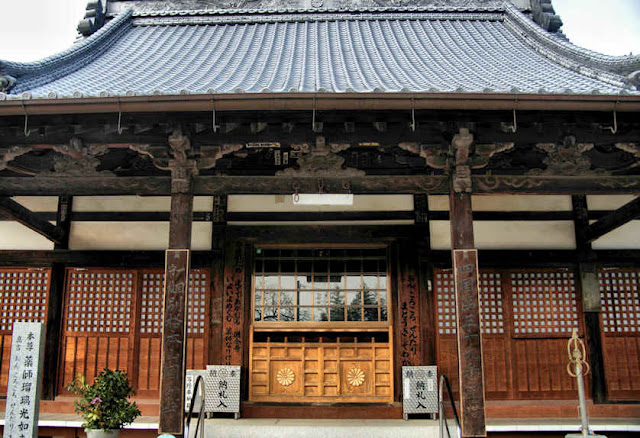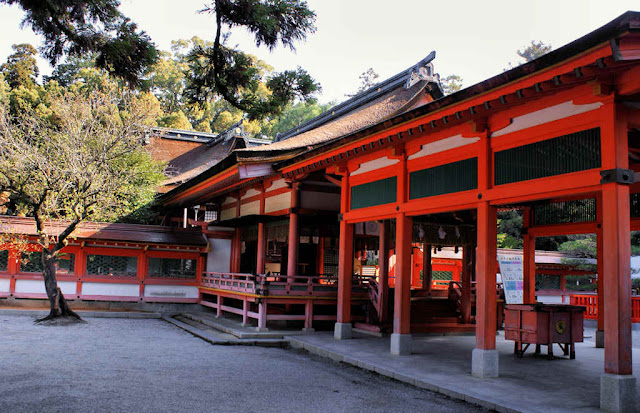Kashii Shrine is a large shrine complex a little north of Hakata in Fukuoka. Sometimes called Kashiigu, it used to be called Kashii Jingu and that is the name of the nearest station.
In front of the shrine is a delightful pond garden with a Benzaiten Shrine.
According to the records the shrine was founded in 723, although it seems that it was not technically a shrine at that time but a mausoleum, which many historians believe was the first example in Japan of this mainland Asian concept.
According to the myths, this was the site of a temporary palace for Emperor Chuai and his consort Jingu on their military campaign to subdue the local Kumaso people.
Chuai died here and Jingu built a mausoleum for him before going on to invade and conquer Korea, something for which there is zero evidence of.
It is said that later she was also enshrined here and the two mausoleums together became what is now Kashii Shrine.
According to the records the site changed into being a shrine from being a mausoleum in the 10th century.
The shrine grew in status and is now one of the 16 shrines nationwide that still receive offerings from Imperial envoys.
The shrine was burned down numerous times during its history.
The current main hall dates back to 1801. Other structures date back to the end of the 19th century.
One notable feature is the Ayasugi, photo 9, an ancient tree encircled with a vermillion fence. According to the legend Jingu buried objects here on her return from Korea including twings of sugi, Japanese Cedar, that had been carried inside her armour. According to this myth the tree is supposedly 1,800 years old.
The main kami of the shrine are Emperor Chuai and Empress Jingu along with their son, Ojin / Hachiman, and the Sumiyoshi Kami.
There are lots of other shrines within the grounds, including an Inari and a Keihi shrine, photo 11.
There is a Takeuchi Shrine enshrining the famous minister serving Chuai and Jingu and several other emperors as he is said to have died at 280 years of age. He is enshrined at many shrines in Japan but his main shrine is
Ube Shrine in Tottori. Makio Shrine, last photo, enshrines another minister, Nakatomi Ikatsu Omuraji.
Other shrines are a Hamao Shrine, a Kutose Shrine, a Hirano Shrine, an Inkeya Shrine, A Takaba Shrine, and a Hayatsuju Shrine.
There are many, many shrines and sites around this part of northern Kyushu with connection to the myth of Jingu, many of which I visited, so it seems fairly certain that there was a powerful female leader in the area. The dates of 3rd century are patently absurd, though that doesn't stop many from claiming them as historical fact. Some historians in the Edo Period suggest the Jingu myths refer to Himiko. The invasion of Korea has absolutely zero evidence, though there is lots of evidence suggesting an importation of people, ideas, and technology from the Korean Peninsula in the 5th century, the more likely time of any historical "Jingu".
The previous post in this series on Day 76 of my Kyushu Pilgrimage was on
Hakozaki Shrine.





































































